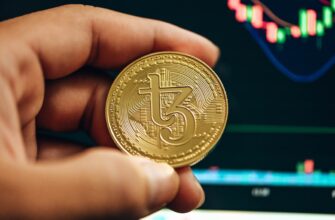## Crypto Global: The Borderless Financial Revolution
In today’s interconnected digital age, **crypto global** represents more than just a technological innovation—it’s a paradigm shift in how the world perceives and interacts with value. Cryptocurrencies transcend geographical boundaries, enabling instant transactions across continents without traditional banking intermediaries. This decentralized ecosystem, powered by blockchain technology, is democratizing finance and challenging conventional economic systems. From Bitcoin’s emergence in 2009 to today’s diverse landscape of over 20,000 digital assets, the **crypto global** movement continues to accelerate, driven by increasing institutional adoption and grassroots enthusiasm worldwide.
## The Explosive Growth of Global Crypto Adoption
Cryptocurrency adoption has surged at an unprecedented pace globally. Consider these pivotal developments:
– **Retail Expansion**: Over 420 million crypto users worldwide in 2023, up from just 5 million in 2016
– **Institutional Embrace**: Major corporations like Tesla and PayPal now integrate crypto payments and services
– **Nation-State Adoption**: El Salvador made Bitcoin legal tender in 2021, while countries like Switzerland and Singapore established crypto-friendly regulatory frameworks
– **Emerging Markets Lead**: Nigeria, Vietnam, and the Philippines show the highest grassroots adoption rates due to remittance needs and currency instability
This growth is fueled by blockchain’s core advantages: transparency through public ledgers, reduced transaction costs (especially for cross-border payments), and financial inclusion for the 1.4 billion unbanked adults globally.
## Key Drivers Powering the Crypto Global Ecosystem
Several interconnected forces propel cryptocurrency’s worldwide expansion:
1. **Decentralization Demand**: Distrust in centralized financial systems following the 2008 crisis ignited interest in peer-to-peer value exchange
2. **Inflation Hedge**: Populations in high-inflation countries (e.g., Argentina, Turkey) increasingly turn to Bitcoin as a store of value
3. **Technological Innovation**: Advancements like Ethereum’s smart contracts enable decentralized finance (DeFi) applications accessible to anyone with internet
4. **Generational Shift**: 45% of millennials and Gen Z investors hold crypto versus 4% of baby boomers
5. **Remittance Revolution**: Crypto slashes international money transfer fees from 7% (traditional services) to under 3%
## Global Regulatory Landscape: Challenges and Progress
Regulation remains the most significant hurdle for **crypto global** integration. Approaches vary dramatically:
– **Progressive Jurisdictions**:
– Switzerland’s “Crypto Valley” offers clear guidelines
– Singapore’s Payment Services Act provides licensing frameworks
– UAE’s ADGM free zone attracts blockchain startups
– **Restrictive Environments**:
– China’s comprehensive crypto trading ban (2021)
– India’s heavy taxation (30% on crypto gains)
– U.S. SEC’s aggressive enforcement actions
Regulatory uncertainty creates market volatility but gradual standardization is emerging through initiatives like the EU’s MiCA (Markets in Crypto-Assets) regulation set for 2024 implementation.
## The Future of Crypto Global: Predictions and Possibilities
Looking ahead, five trends will shape cryptocurrency’s global trajectory:
1. **CBDC Integration**: 114 countries (representing 95% of global GDP) are exploring central bank digital currencies
2. **DeFi Evolution**: Decentralized exchanges may process over $1 trillion annually by 2025
3. **Web3 Expansion**: Blockchain-based internet infrastructure will create new digital economies
4. **Green Transition**: Proof-of-Stake networks (like post-Merge Ethereum) reduce energy consumption by 99%
5. **Interoperability Breakthroughs**: Cross-chain solutions will connect isolated blockchain ecosystems
As these developments unfold, **crypto global** could fundamentally reshape international trade, asset ownership, and economic participation within this decade.
## Crypto Global FAQ: Your Top Questions Answered
**Q: What does “crypto global” actually mean?**
A: It refers to cryptocurrency’s worldwide ecosystem—the technologies, markets, regulations, and communities enabling borderless digital asset exchange across nations.
**Q: Which country leads in cryptocurrency adoption?**
A: According to Chainalysis 2023 data, emerging economies dominate: Vietnam, Philippines, Ukraine, India, and Pakistan show the highest grassroots adoption based on transaction volume and user activity.
**Q: Is crypto legal everywhere?**
A: No. While many countries permit crypto trading (like the U.S., Germany, Japan), others impose partial restrictions (e.g., Russia bans crypto payments but allows mining) or complete prohibitions (China, Egypt). Regulations evolve constantly.
**Q: How does crypto help developing economies?**
A: By enabling:
– Affordable remittances for migrant workers
– Inflation-resistant savings
– Access to global markets via DeFi platforms
– Reduced corruption through transparent transactions
**Q: What’s the biggest barrier to global crypto adoption?**
A: Regulatory fragmentation. Inconsistent rules across jurisdictions create compliance complexity for businesses and uncertainty for users. International coordination efforts are underway but progress remains slow.
## Embracing the Borderless Future
The **crypto global** phenomenon continues to accelerate, driven by relentless technological innovation and growing disillusionment with legacy financial systems. While volatility and regulatory challenges persist, cryptocurrency’s core promise—democratizing access to value exchange—resonates powerfully across continents. As blockchain infrastructure matures and global frameworks emerge, we stand at the threshold of a financial transformation that could ultimately redefine economic participation for billions worldwide. The journey toward a truly borderless economy has only just begun.








